~ 9 ~
~ The Study of Threes ~
http://threesology.org
Researchers as of 8/29/2019
| Devil's Advocate Series: | ||||||||
|---|---|---|---|---|---|---|---|---|
| 1 | 2 | 3 | 4 | 5 | 6 | 7 | 8 | 9 |
| 10 | 11 | 12 | 13 | 14A 14B |
15 | 16 | 17 | 18 |
| 19 | 20 | 21 | 22A 22B |
23 | 24 | 25 | 26 | 27 |
| 28 | 29 | 30 A | 30 B | 31 | 32 | 33a | 33b | 33c |
| 34 | 35 | 36 | 37 | 38 | 39 | 40 | 41 A | 41 B |
This is rather an exciting page whose entry was begun yesterday (Saturday, 31st October) while musefully resting my eyes on a hot afternoon. While I have collected numerous threes examples I shall forthwith be introducing in future pages, my thoughts were drawn to a correlation with three initial ideas that I no doubt will be referencing from time to time in different contexts. To begin with...
In biology, 3 types of symbiotic relationship are identified (and unfortunately, typically defined in terms of two life forms... though it can well reference more than two... and not necessarily just life forms):
- Mutualism is a symbiotic relationship in which both species benefit.
- Commensalism is a symbiotic relationship in which one species benefits while the other species is not affected.
- Parasitism is a symbiotic relationship in which one species (the parasite) benefits while the other species (the host) is harmed.
Symbiotic Relationships (Mutualism, Commensalism and parasitism)
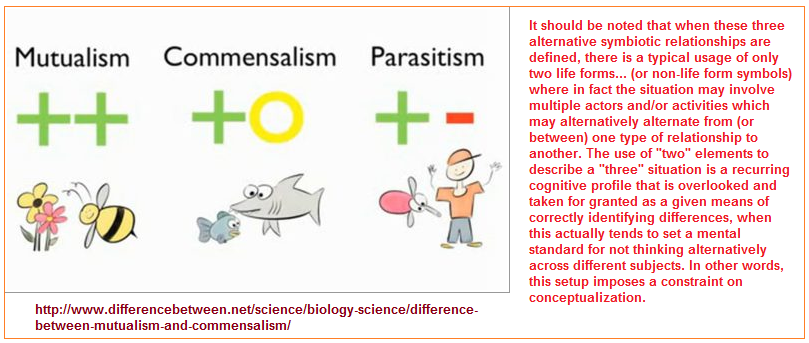
In physics, there are 3 basic (large) particles labeled Protons, Neutrons, Electrons. If we use the basic idea of a "symbiotic relationship" applied to the arrangement seen in atoms, how would we define their state of being? For example, when we say that inside the nucleus their exist two particles (Protons + Neutrons) and outside exists one particle (Electrons), is this configuration best described with a biological reference such as a symbiotic type of relationship profile, or does such an animate inference lead us astray from recognizing a more clearly definable relationship that may be better described in terms of a primitive cell with 3 types of nearby organelles which can remind one of the 3 particles in most atomic structures? Then again, if we wanted to explore this 1-2-3 developmental scenario from the perspective of pearls in an oyster as another type of analogy or metaphor, we might well come up with the following considerations:
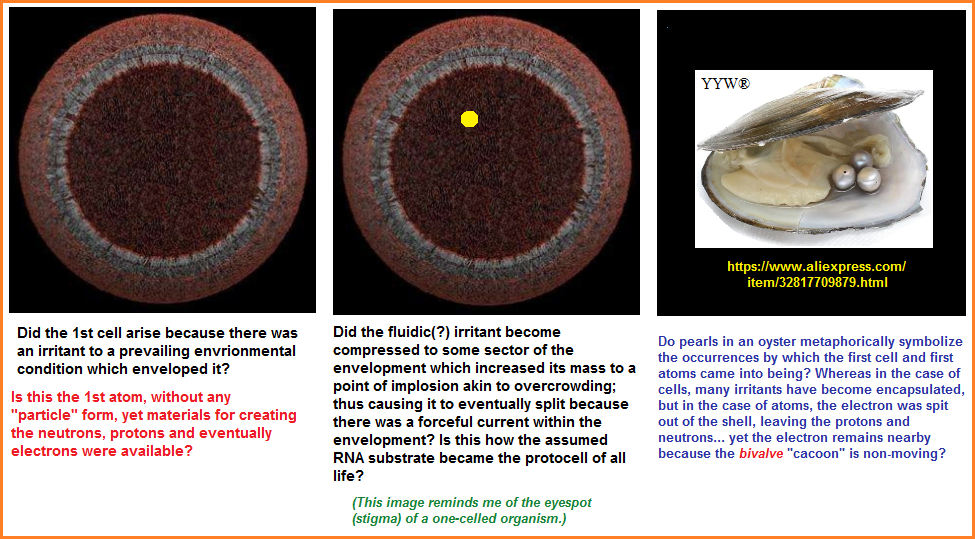
Yet not only can we interpret the positions of the three large subatomic particles in terms of one or another symbiosis, but their representative effects on one another can likewise be viewed accordingly, so long as we permit ourselves some leeway in the parameters of the definitions, which necessarily have to be "tweaked" when being transplanted from one subject's environment to another (from the territory of biology to the terrain of physics):
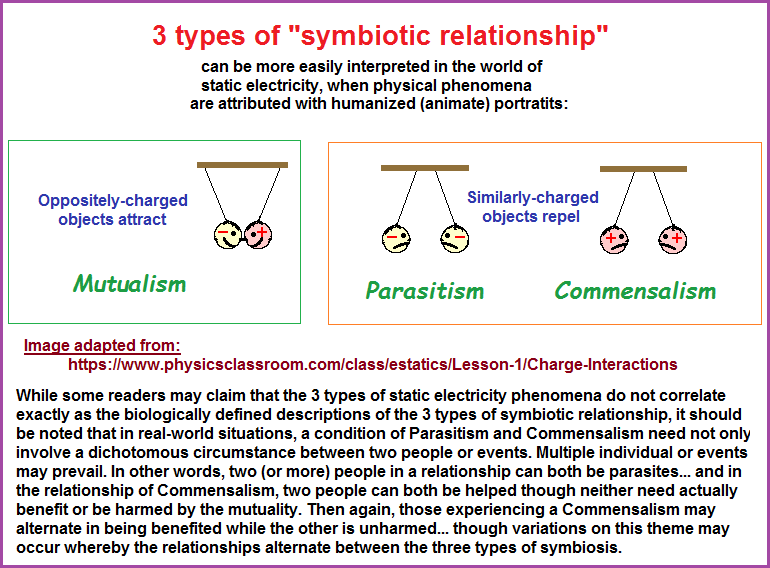
As a third "relationship" type of correlated comparison, let us include the evolutionary development of the kidneys, in which two of its threes stages are "reabsorbed" (let us say "eaten") by the third stage; like an embryonic life form getting nourishment from its surroundings.
In my mind I am viewing the three types of symbiotic relationship in terms of a 1-2-3 developmental scenario, just as I view the development of the elements in a similar way... to the extent the three particles of the atom must have had an earlier two-particle phase as suggested by the proton/neutron configuration of the Hydrogen atom, even though there does not appear to be a readily identifiable single particle atom... though multiple examples of three-particle atoms are abundantly apparent. Hence, although we consider Hydrogen to be a primitively "first" appearing element, it is not the primary first... at least as is suggested by a 1-2-3 developmental sequencing pattern.
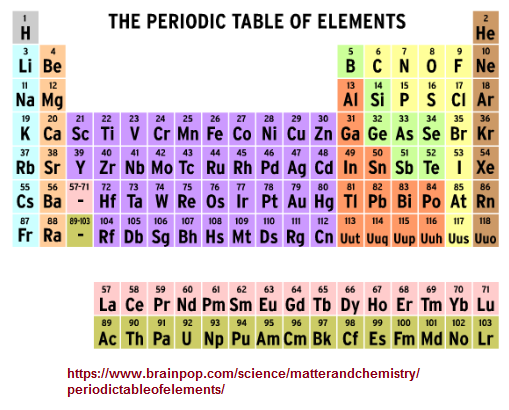
By looking at the periodic table of the elements, one might construe the idea that the numerical arrangement (Hydrogen 1, Helium 2, Lithium 3... etc.,) is the sequence in which the elements arrived in existence. However, since the Hydrogen atom is configured as a "two" model, we must consider that there existed a previous "one" model of some element... unless we want to ascribe this to the generation of the Hydrogen atom as well, which has (at the present course in existence), stabilized at a "two configuration (proton + neutron), though there are isotopic variations:
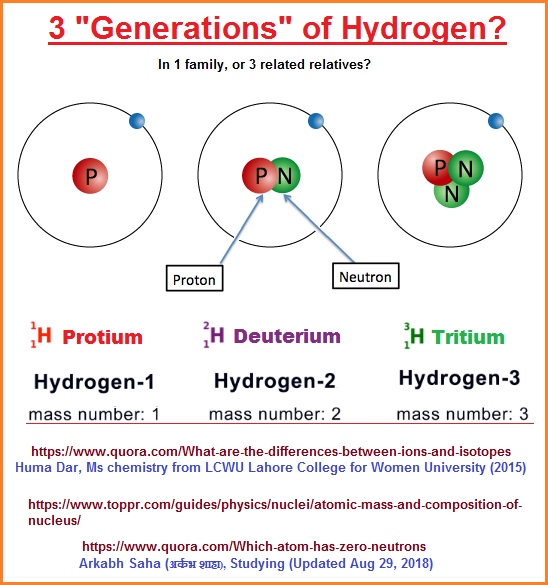
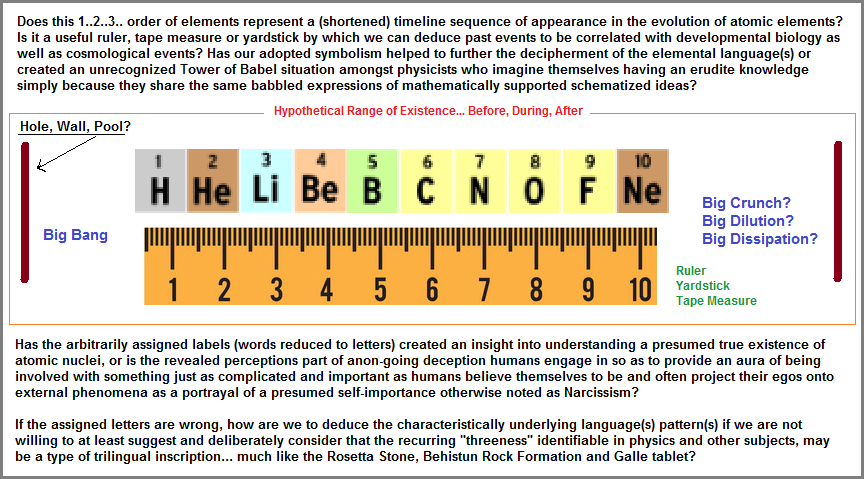
In attempting to understand the nature of nuclear particles, we humans create various ideas that often become representative of the processes of human thinking that frequently revolve around the adoption of a "three" within the criteria of a single model or three separate, but inter-related models. For example, (the article did not contain the images, they were added for the present context):
|
A goal of nuclear physics is to account for the properties of nuclei in terms of mathematical models of their structure and internal motion. Three important nuclear models are:
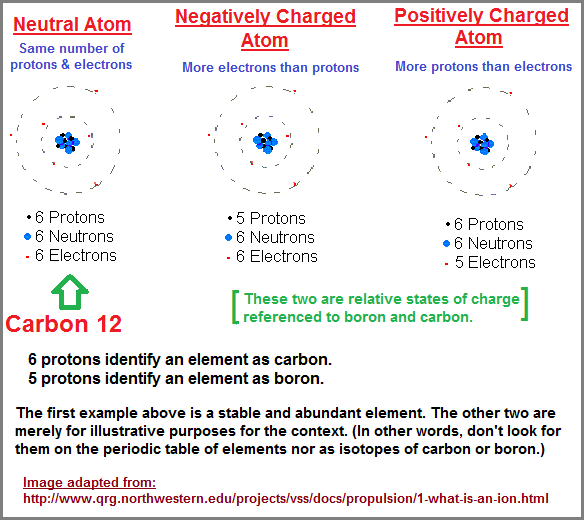 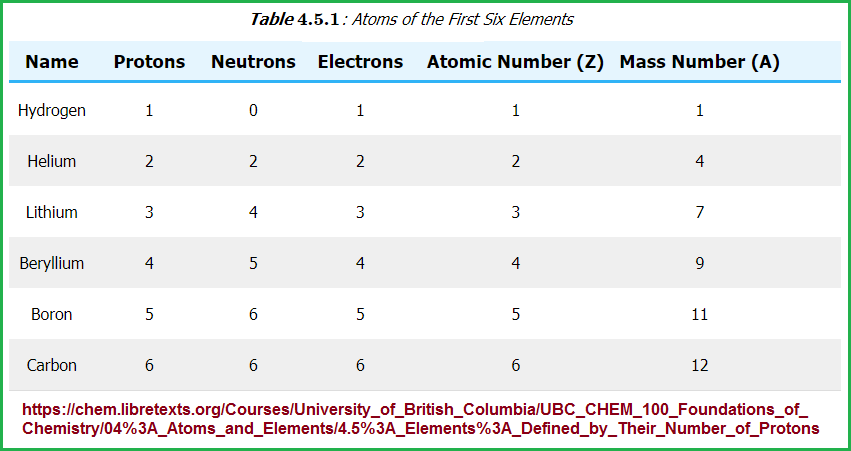 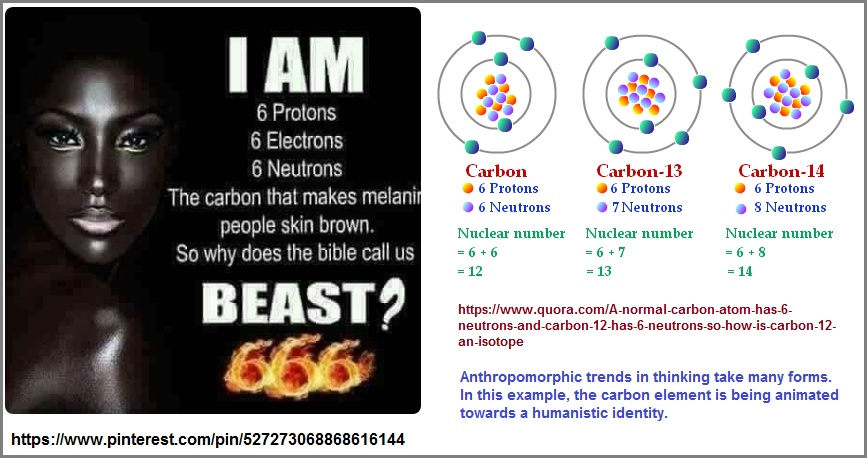
The Shell Model and the Collective Model represent the two extremes of the behavior of nucleons in the nucleus. More realistic models, known as unified models, attempt to include both shell and collective behaviors. |
Yet, while the above three-patterned description does describe an attempt to understand fundamental particle behavior, they don't directly address the idea involving the evolution of the particles in terms of a 1-2-3... developmental sequence. Nonetheless, the excerpt does add to the growing list of "threes" examples dealing with the repetitiveness of human cognition in an incrementally deteriorating environment.
Let us place the symbiotic relationship trio, atomic trio and kidney trio into respective types of developmental narratives, though one or another reader might have an objection to the order. Nonetheless, we have a simple formulaic schematic to visualize and not have to guess at:
- (Symbiotic relationships): 1st came Parasitism, 2nd came Commensalism, 3rd came Mutualism.
- (Development of elements): 1st came an unnamed single-particle Proto-atom, 2nd came a two-particle (meso-) Hydrogen?, 3rd came the unnamed (?) first three-particle Meta-atom as the Grandfather of all present day triple-particle atoms.
- (Vertebrate Kidney development): 1st came the Pronephros, 2nd came the Mesonephros, and 3rd came the Metanephros.
And just for fun let us add three more "pattern-of-three" examples, the first being the three types of invertebrate excretory systems, the second being the developmental stages of writing (which reminds me of the prefix- infix- suffix alignment), and the third the development of the 1- 2- 3 point system in basketball:
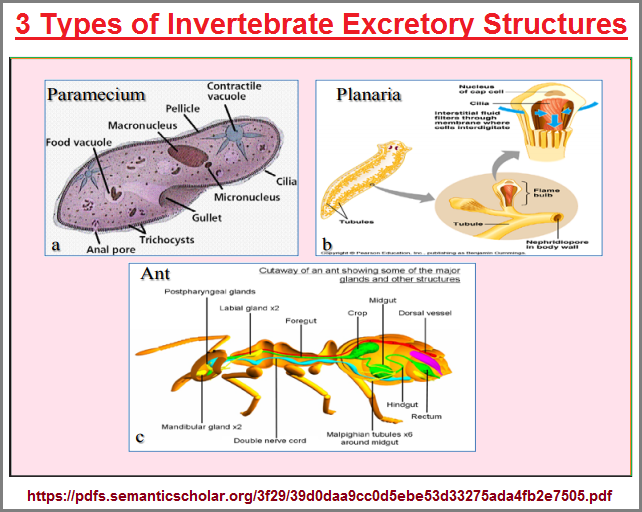
- Picture writing system: glyphs (simplified pictures) directly represent objects and concepts. In connection with this, the following sub-stages may be
distinguished:
- Mnemonic: glyphs primarily as a reminder.
- Pictographic: glyphs directly represent an object or a concept such as (A) chronological, (B) notices, (C) communications, (D) totems, titles, and names, (E) religious, (F) customs, (G) historical, and (H) biographical.
- Ideographic: graphemes are abstract symbols that directly represent an idea or concept.
- Transitional system: graphemes refer not only to the object or idea that it represents but to its name as well.
- Phonetic system: graphemes refer to sounds or spoken symbols, and the form of the grapheme is not related to its meanings. This resolves itself into
the following sub-stages:
- Verbal: grapheme (logogram) represents a whole word.
- Syllabic: grapheme represents a syllable.
- Alphabetic: grapheme represents an elementary sound.
Originally, a successful (Basketball) goal was counted as one point, and one point was also given to a team anytime three consecutive fouls were called on the opponent. Free throws were first introduced in 1894. Both a made field goal and a made free throw were counted as one goal. In 1896, rules were changed to count a made field goal as two points. In 1961 the short lived American Basketball League played with the three point shot. In 1967, the three point shot was introduced into International basketball by FIBA. The three point shot was adopted by the National Basketball Association (NBA) in 1977 and by the National Collegiate Athletic Association (NCAA) in 1980.
Basketball Basics: Evolution of the GameWikipedia: Three-point field goal
There are of course multiple 1-2-3 developmental examples, but let me return to the aforementioned Kidney example with two images:
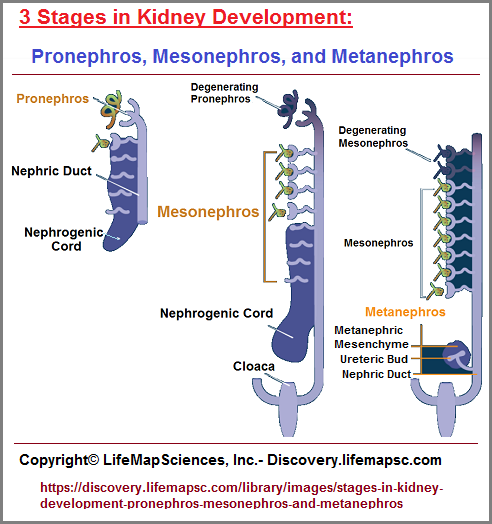
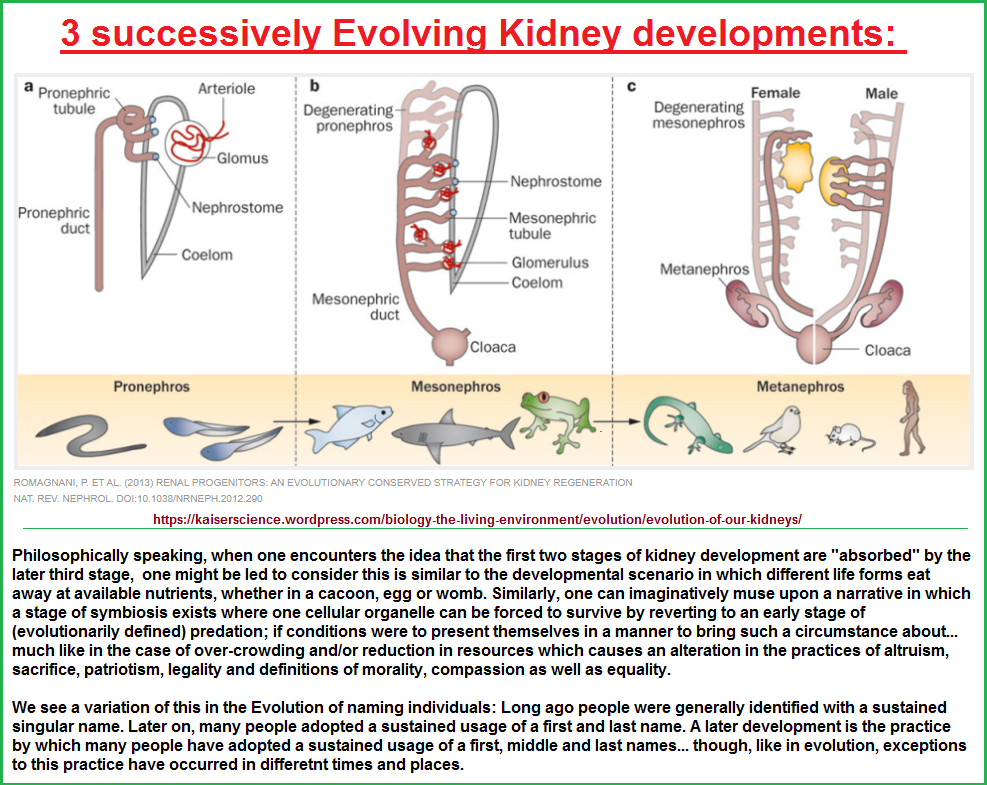
When speaking of evolutionary stages in biology, we have to look at the scenario of development long before the advent of organs or even complex life as we know it. Such a view harkens us back to an early era of history long after the development of the elements, but just before the development of a complex cell structure having multiple organelles, or in other words, multiple components within an encased shell called a cell wall. The idea of a "Protocell" has been considered containing only a single item thought to be an RNA replicase. And though the following picture shows three (what appear to be) RNA replicases, let us presume that the original (first) cell had only one... followed by two... then three. This was then followed by a "complex" cell structure referred to as the Prokaryotic which was sometime later followed by the development of the Eukaryotic cell.
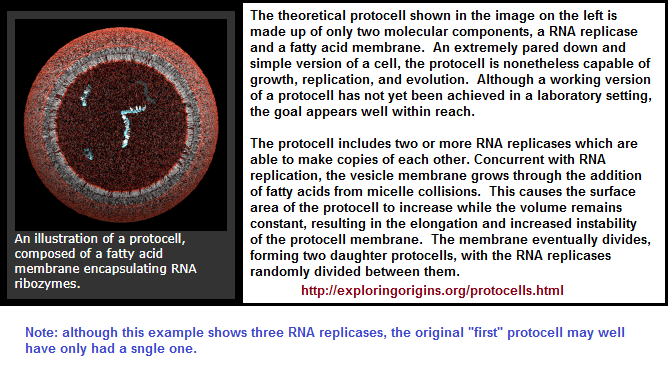
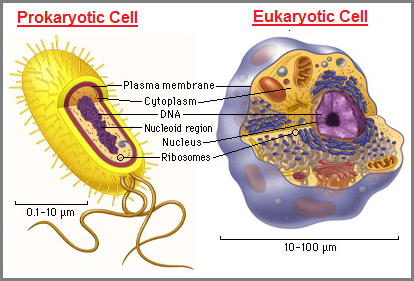
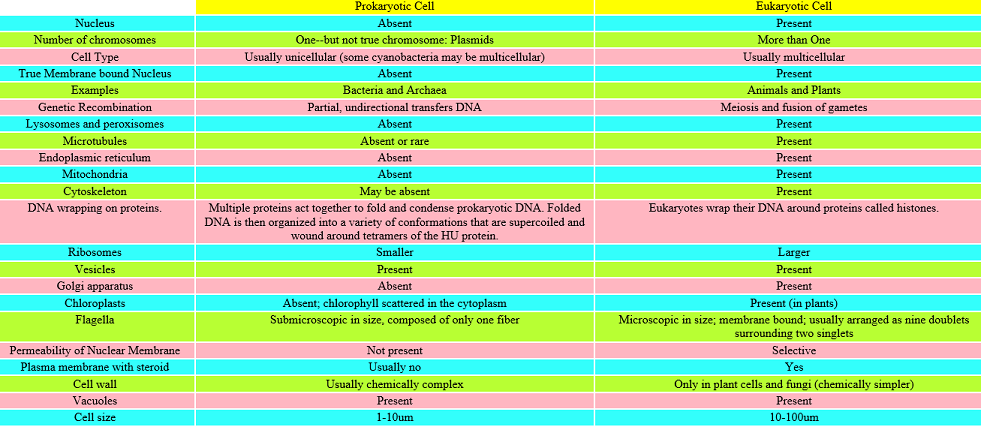
Prokaryotic Cell Versus Eukaryotic Cell
As can be seen in the comparison chart, we can assume from the information that the Prokaryotic cell is more primitive than the Eukaryotic cell. However, in describing the cell wall, there is an inclination to think in terms of a recurring "two" (bi)-lipid layer, though in evolutionary terms, a single layer may well have pre-existed, and that the so-called bi-lipid layer has been viewed as a trilaminar configuration. Let us take a look at the different observations f the cell wall in an effort to entertain whether there is a two-layer or three-layer cell wall, or perhaps the better interpretation may be to describe it as transitional stage between a two and three structure. All in all, what needs to be done is affix our sights on whether one, the other or a third interpretation is most advantageous to our developing timeline presentation. Indeed, when we take into stock the totality of examples, which interpretation assists us in acquiring a greater overall interpretation?
Is the assigned "Bi-lipid" layer idea a mid-point evolutionary junction between a one and three-layer configuration, or is the cell wall being viewed and interpreted incorrectly, because it too is part of a 1-2-3 sequence like that found in the Three successive stages of Kidney development as well as the three Germ layers? Without an understanding of or at least a recognition of the multiple three-patterned sequences occurring both in and out of biology, which could either (or both) mean that the pattern is matter-of-factly a part of the material or an imposition of a human cognitive proclivity as part of a culture of study; the idea of a 1-2-3 maturational sequence possibility may not enter into the mind of someone attempting to analyze a given subject matter. If the 1-2-3 scenario is a recurring theme due to an inherent disposition, its presence or absence needs to be identified and acknowledged to weed out the associated questions we can bring to bear upon the circumstance.
In addition, we need to not only map the enumeration sequence for the development of the three germ layers, but address the two-layer (bi-lipid... fluid mosaic model) versus the old three-patterned (Dawson–Danielli) "sandwich" model for the layers of cells. On the one hand, the three-part model was initially described with the perspective of three separate layers, though we can now find simplified illustrations describing what some may want to numerically designate as a "4" model, despite the 2 lipid layers and 2 protein layers appearance:
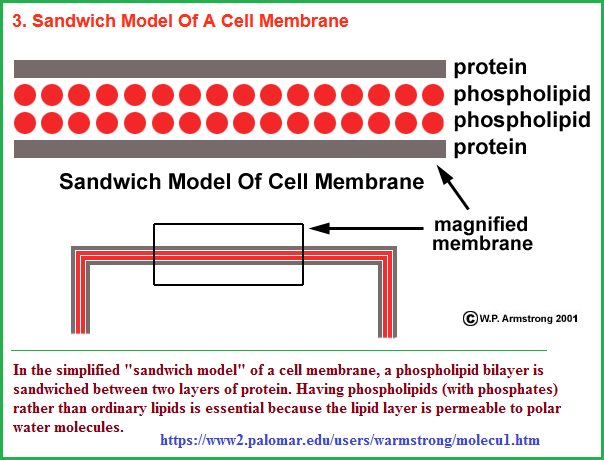
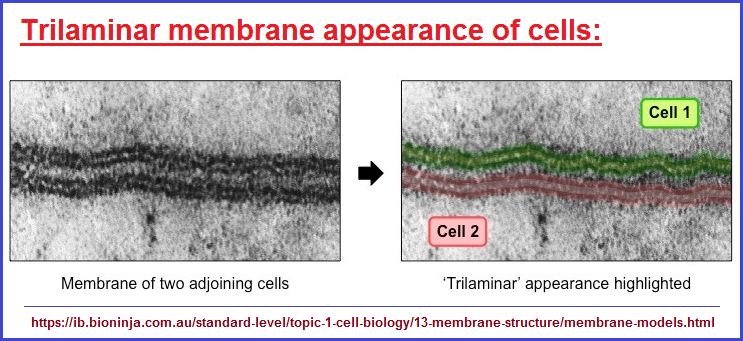
By saying the above has a "4" structure, we thus have three models: a Bi-layer model, a Tri-layer model, and a Quad-layer model. Nonetheless, let us now view a representative example of the two-patterned idea that is elaborately entitled the fluid mosaic model:
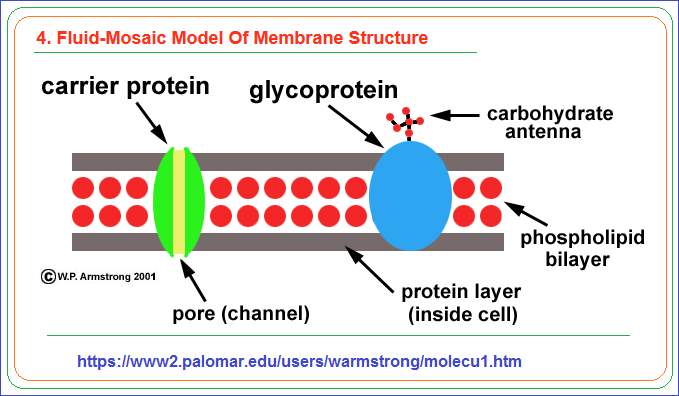
Another three-layer representation is found in the idea that early life got its start in clay, which has some currency of relevancy for the present discussion:
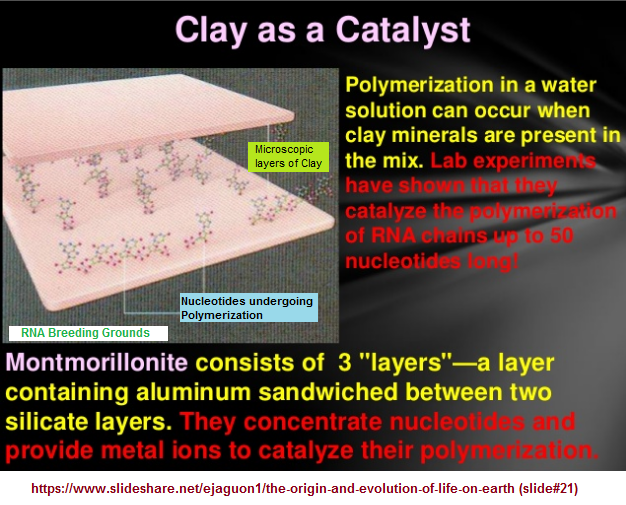
From different perspectives we can view a 2, 3, or 4 layer structure. While the "4" model is not routinely discussed, I brought it to the forefront for those who are "counters" and would voice the opinion that there are four layers, even though different perceptions and interpretations can render these as two or three layers. Yet, even if we set the "4" idea aside, we must still contend with the 2 versus 3-layers orientations, despite the bi-layer "fluid mosaic" model apparently having a wide reception over the trilaminar idea. And while some may view this discussion as a nit-picking (irrelevant) one, the 2- versus 3- layers is an important issue because, from a "Threesological" perspective, if cell layers are two and not three, or exhibit a transitional stage between a definitive two and three structure, then this describes the evolutionary position cell structure is in. In other words, like Germ Layers developing along a one- two- three course (Endoderm followed by Endoderm + Ectoderm followed by Endoderm + Ectoderm + Mesoderm), if cell layering is two-patterned as some are claiming, then this provides evidence of a primitivity. If it is a three-structure then this provides evidence of a later evolutionary stage (that may or may not be followed by another evolutionary event involving yet another 1-2-3 pattern of development). If we combine the two-layer and three-layer ideas, we come up with a reference such as a "bi-lipid fluid mosaic trilaminar model".
To me, the usage of the two-word phrase "fluid mosaic" is more in line with an artistic expression as a means to emphasize a particular scrutiny of perception like many an artist does when entitling their art craft, or authors do for titles and chapters, or clergy do for sermons, or song writers for songs, cooks for recipes, names for sports teams, television shows, political slogans, school names, pet names, gang names, sobriquets, pen names, etc... It is rather silly to attempt an emphasis for a two-patterned perspective by adding on the title "fluid mosaic" when this too can be added to the sandwich model, since many a person knows that sandwiches "ooze" fluid-mosaically with the addition of condiments (ketchup, mustard, mayonnaise, etc., or the juices of food. Hence, the "oozing" described by the notion of "fluid mosaic" is very much a part of the trilaminar sandwich model. Nonetheless, what is the evolutionary stage of development of cell layering? Is it a more primitive two-patterned ensemble, a two transitioning into a three-patterned ensemble, or an actual three-patterned ensemble? And if I may be permitted to take a phrase from Shakespeare's famous Hamlet character ("To be or not to be?... that is the question") and re-coin it for the present excursion of applied thought:
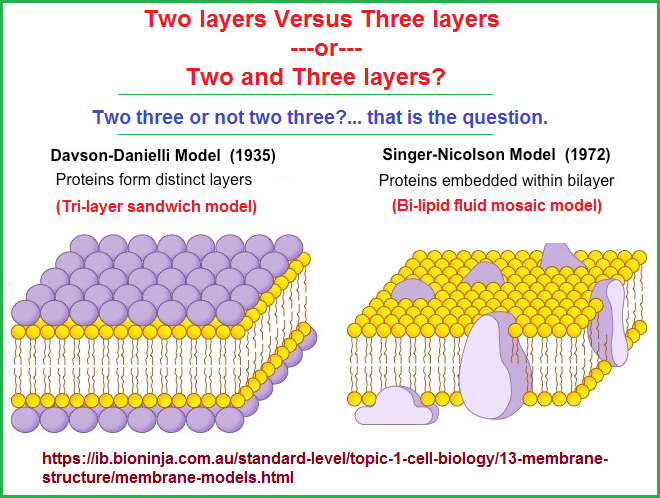
The "two/three" pattern is of interest because it can alternatively be viewed in a numerological sense of addition (five), subtraction (one), multiplication, (six) and division (3/2 = 1.5 or 2/3 = .6666666666666667). I mention these as an aside note for those who may encounter the values in repeating instances. However, I will forego addressing the combination until the next page in this series.
Origination date: Sunday, September 1st, 2019... 7:40 AM
Initial Posting: Monday, September 2nd, 2019... 2:02 PM
Updated Posting:Tuesday, January 17th, 2023... 12:02 AM
Herb O. Buckland
herbobuckland@hotmail.com